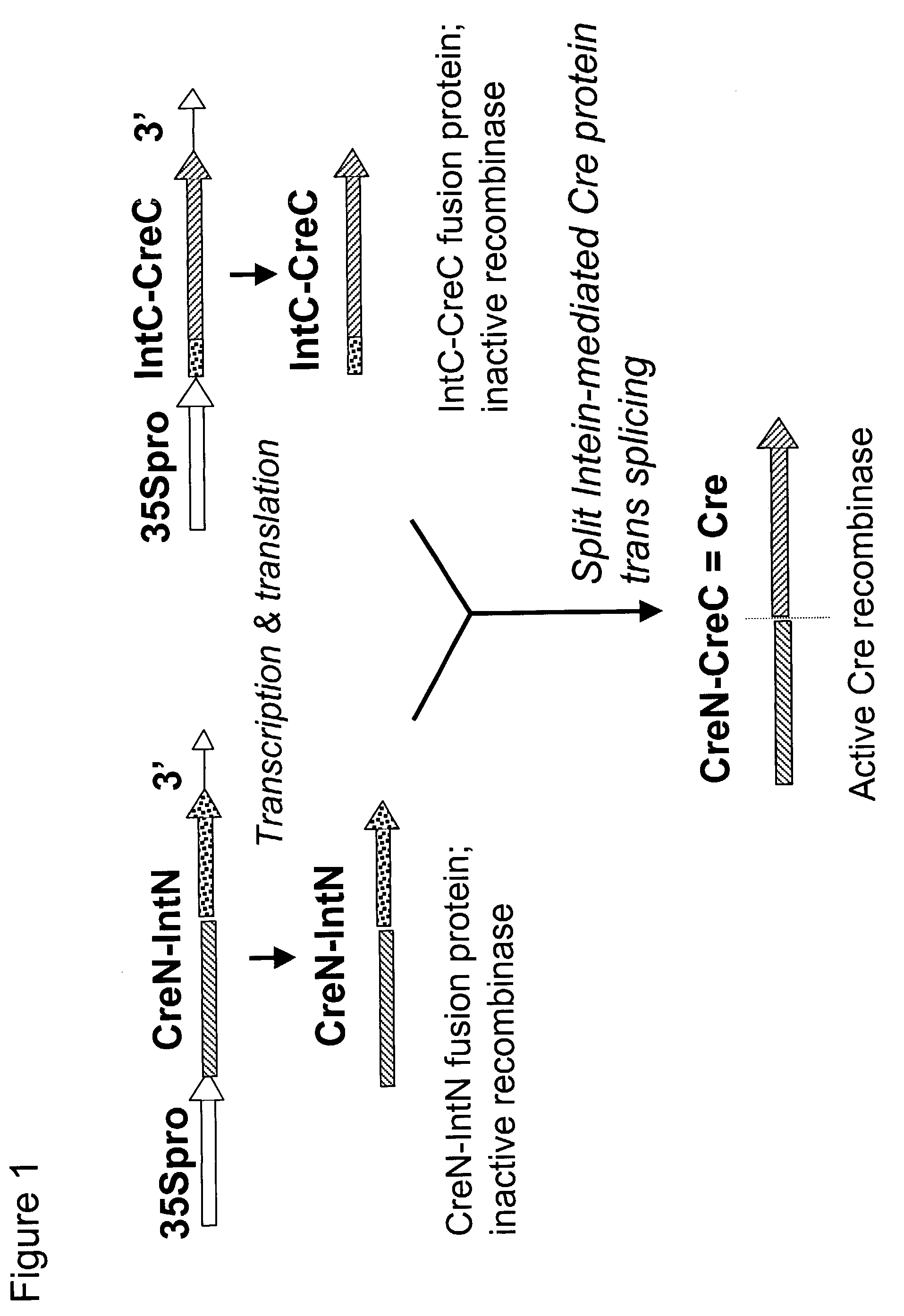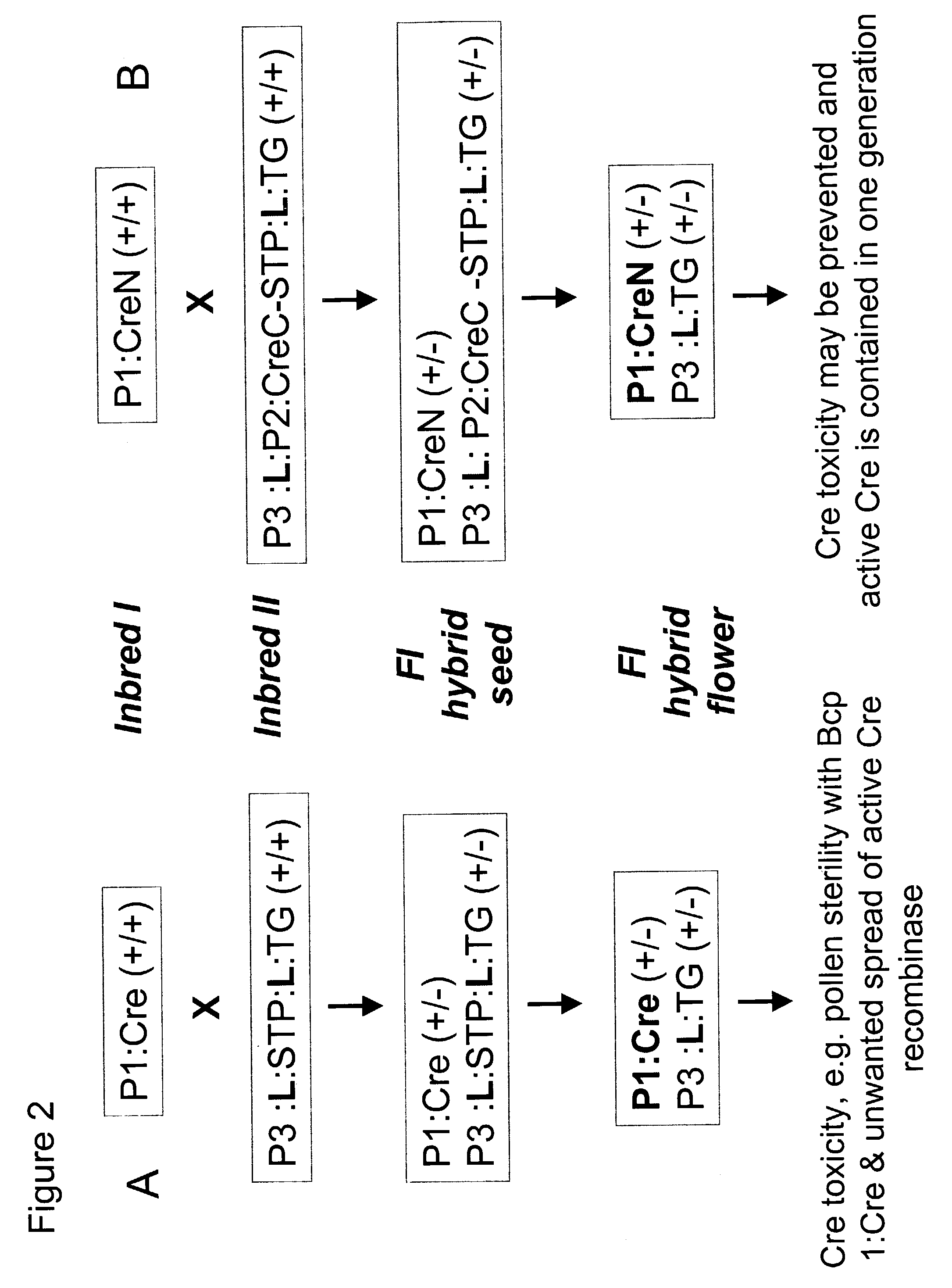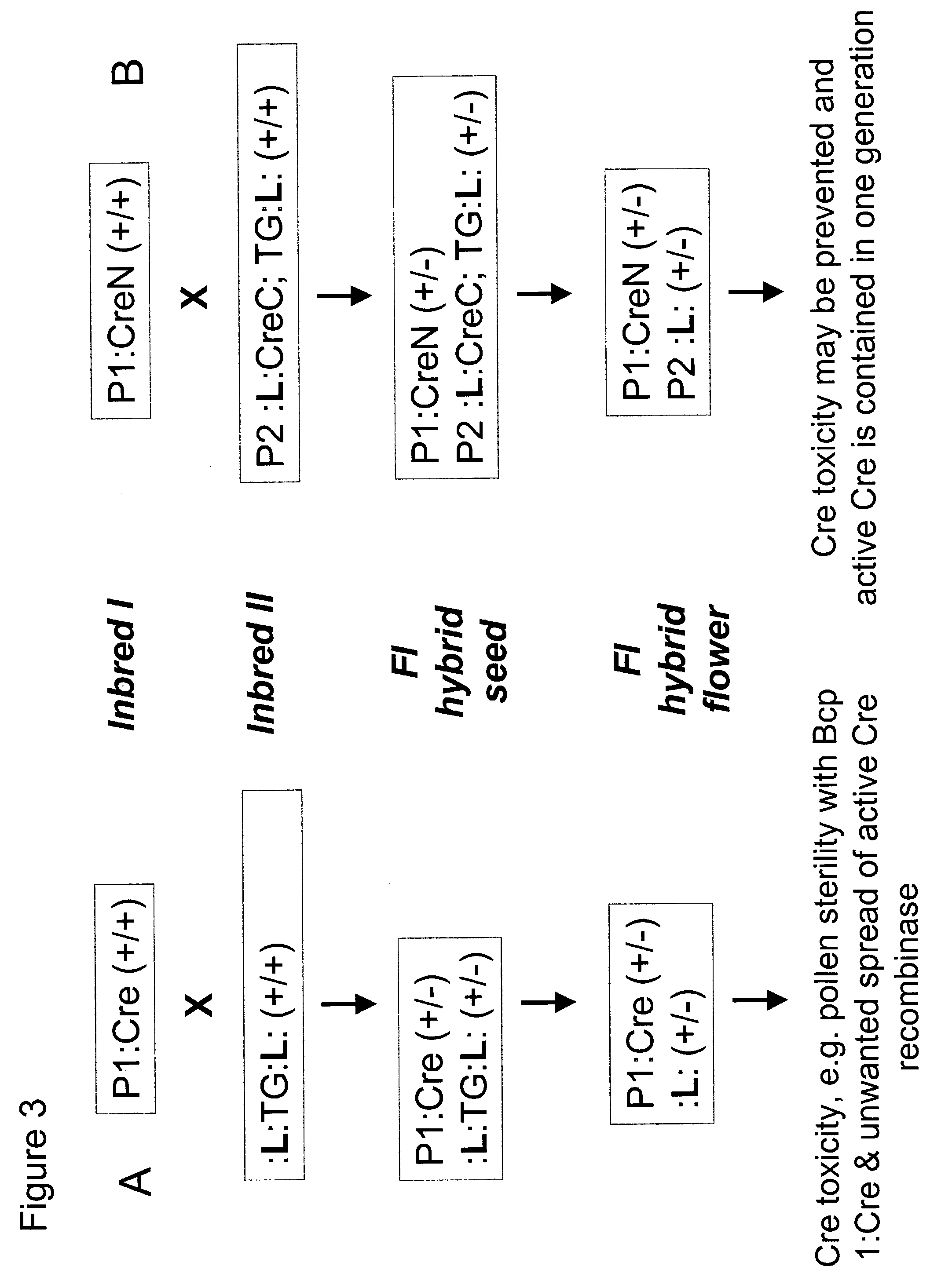Method of controlling site-specific recombination
a site-specific recombination and recombination technology, applied in the field of molecular biology and the genetic transformation of organisms, can solve the problems of impeded general utility of artificial inteins, demonstration of intein-mediated protein splicing technique, and inability to demonstrate that inteins are able to function in higher organisms
- Summary
- Abstract
- Description
- Claims
- Application Information
AI Technical Summary
Benefits of technology
Problems solved by technology
Method used
Image
Examples
example 1
Synthesis and Construction of Vectors Containing the Ssp DnaE Intein with Plant Preferred Codons
[0275]This example describes the synthesis of the Ssp DnaE intein (IntN and IntC) using plant preferred codons. Then, the IntN and IntC were cloned into the pPCR-Script Amp plasmids to create vectors pPlnt-n and pPlnt-c.
[0276]Synthesis of SspE Intein Using Plant Preferred Codons
[0277]A naturally split intein has been identified in a split DnaE gene of Synechocystis sp. PCC6803 that mediates a protein trans-splicing reaction to produce a mature catalytic subunit of DNA polymerase III. Peptide sequences of the DnaE split intein are shown in Table 1.
[0278]
TABLE 1Peptide Sequences of the split intein DnaE fromSynechocystis sp. PCC6803SEQLengthIDIntein(AA)Sequence*NOInt-n123CLSFGTEILTVEYGPLPIGKIVSEEINCSVYS1VDPEGRVYTQAIAQWHDRGEQEVLEYELEDGSVIRATSDHRFLTTDYQLLAIEEIFARQLDLLTLENIKQTEEALDNH RLPFPLLDAGTIKInt-c36MVKVIGRRSLGVQRIFDIGLPQDHNFLLAN2GAIAAN (C)*All four conserved motifs are underlined. Amino...
example 2
Construction Of Cre Recombinase-Intein Elements
[0286]Example 2 describes the construction of plasmids containing in-frame fusions of CreN-IntN and IntC-CreC.
[0287]The IntN and IntC of the Ssp DnaE split intein containing plant preferred codons (as prepared in Example 1) were each respectively fused to an artificially Created N-terminal and C-terminal portion of the bacterial Cre protein, yielding IntN-CreN and IntC-CreC, respectively. The starting plasmid for making both IntN-CreN and IntC-CreC genes was pNY102, which contains a plant gene encoding a modified bacterial Cre.
Construction of Plasmid pNY102
[0288]pNY102 was made by converting the Xbal site in pSK (Stratagene) into an Asp718 site and cloning an Asp718 fragment containing the chimeric transgene, 35S promoter:Cre ORF:3′ octopine synthase (OCS) region, which encodes a functional Cre recombinase.
[0289]The 1411 bp region between Asp718 and the initiation codon of Cre ORF contains (5′ to 3′):[0290]18 bp polylinker sequence, 5′-...
example 3
Making Reporter Plasmid pGV801 as a Trait Expression Construct
[0317]Example 3 describes the construction of a trait expression construct, containing the reporter gene encoding β-glucuronidase, in plasmid pGV801.
[0318]A reporter plasmid construct pGV801 was made containing a 35S promoter: LoxP:nos:npt II:3′nos:LoxP:GUS ORF:3′ nos cassette. In it, the plant kanamycin resistance gene (nos:nptII:3′nos is a chimeric noplaine synthase (nos) promoter: neomycin phosphotransferase:3′ nos transgene) flanked by loxP sites is inserted as a blocking fragment between a 35S promoter and the β-glucuronidase (GUS) coding region. The blocking fragment blocks the translation of GUS by interrupting the GUS coding sequence. However, upon Cre-lox excision, there is a single copy of loxP site left behind as a translational fusion with the GUS ORF thereby allowing glucuronidase expression.
[0319]The reporter plasmid construct, named pGV801, harbors the 5449 bp Sal I-Hind III fragment (SEQ ID NO:40), which c...
PUM
 Login to View More
Login to View More Abstract
Description
Claims
Application Information
 Login to View More
Login to View More - R&D
- Intellectual Property
- Life Sciences
- Materials
- Tech Scout
- Unparalleled Data Quality
- Higher Quality Content
- 60% Fewer Hallucinations
Browse by: Latest US Patents, China's latest patents, Technical Efficacy Thesaurus, Application Domain, Technology Topic, Popular Technical Reports.
© 2025 PatSnap. All rights reserved.Legal|Privacy policy|Modern Slavery Act Transparency Statement|Sitemap|About US| Contact US: help@patsnap.com



